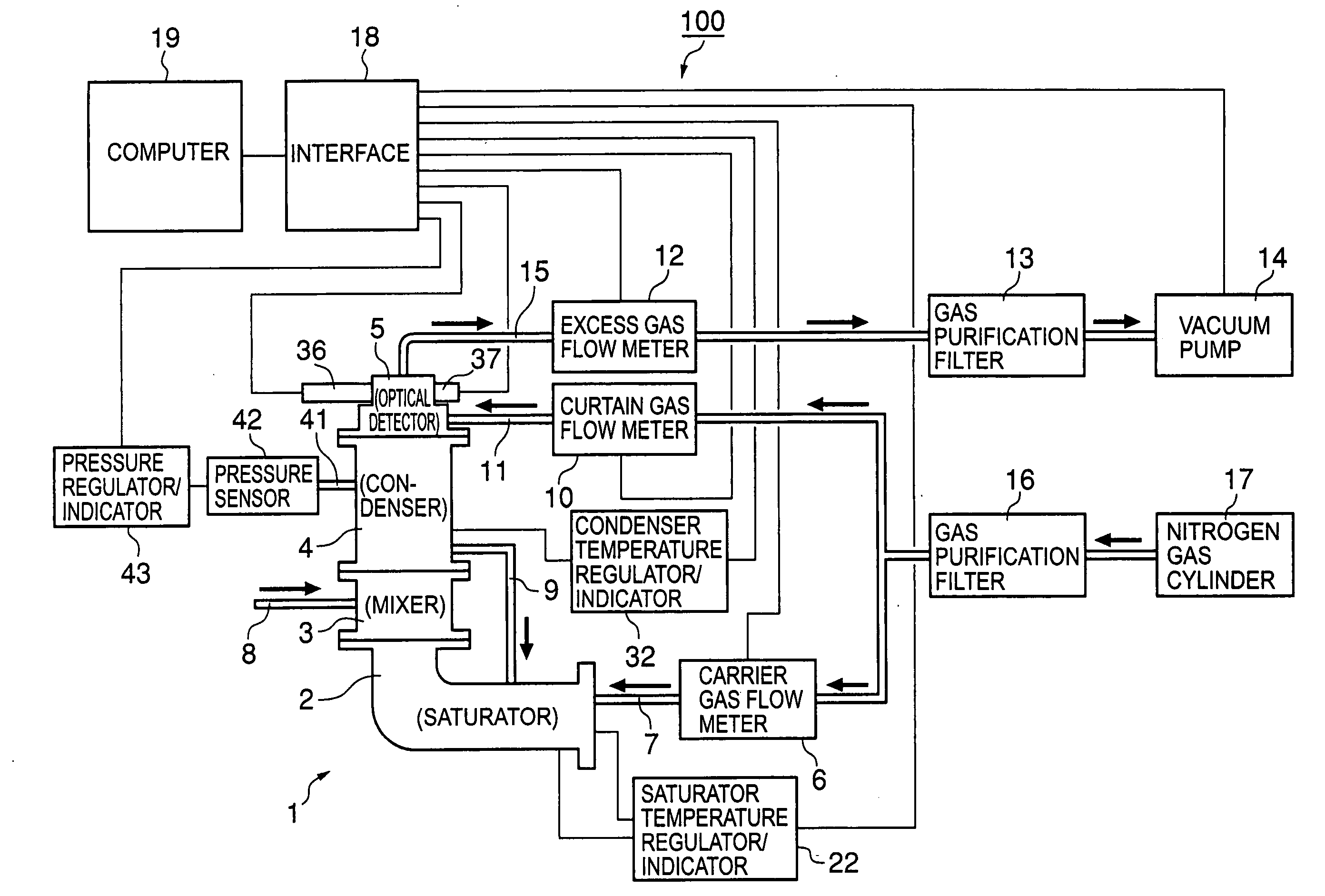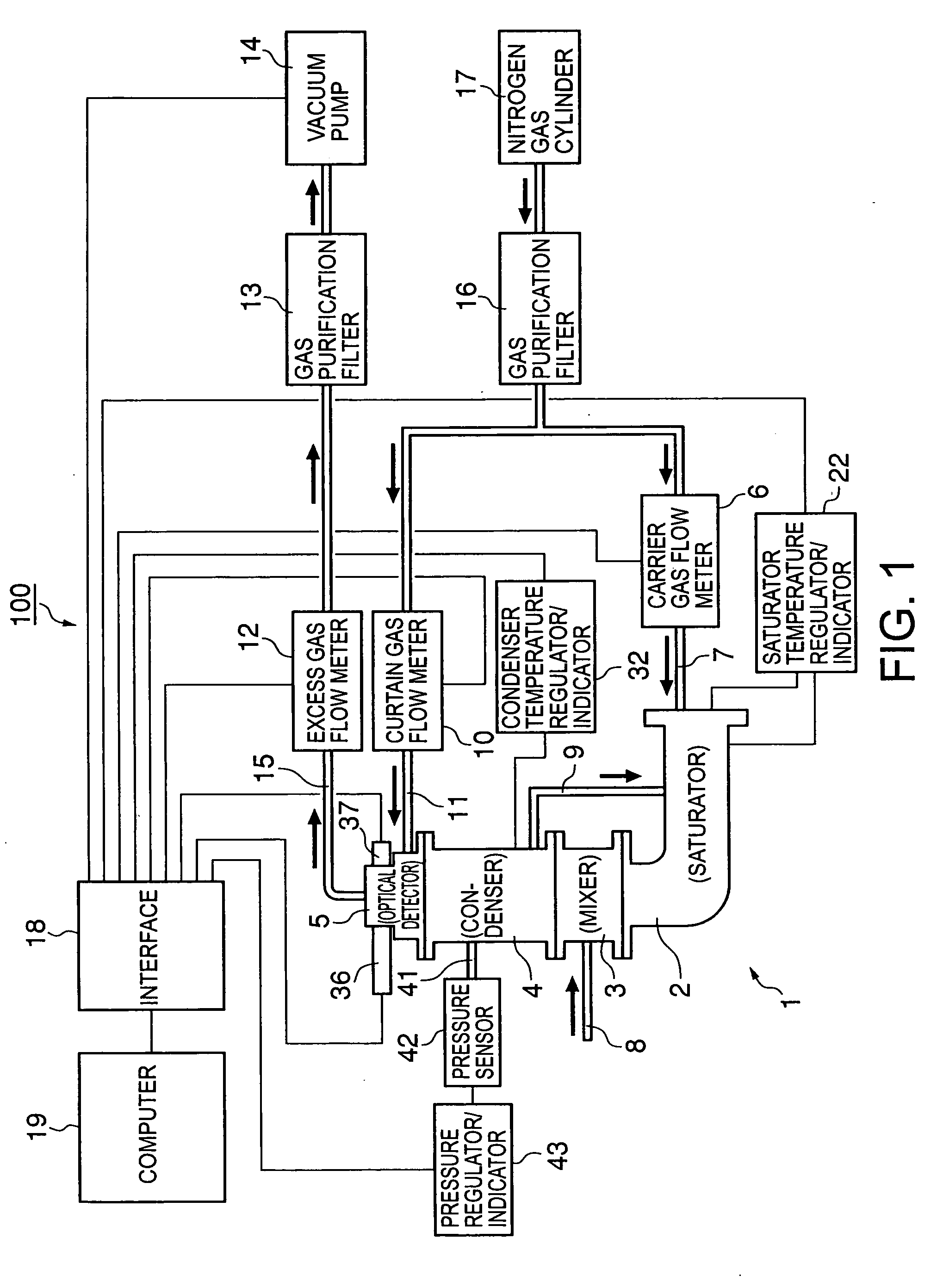Fine-particle counter
- Summary
- Abstract
- Description
- Claims
- Application Information
AI Technical Summary
Benefits of technology
Problems solved by technology
Method used
Image
Examples
Embodiment Construction
[0029]With reference to the accompanying drawings, an embodiment of the present invention will be described hereinafter.
[0030]The whole structure of a fine-particle counter according to an embodiment of the present invention will be first described with reference to FIG. 1.
[0031]A fine-particle counter 100 according to this embodiment is for measuring the number density of fine particles born in a gas phase, and, as shown in FIG. 1, it comprises a saturator 2 for heating a high-boiling-point solvent to produce saturated vapor of the high-boiling-point solvent, a mixer 3 for mixing the saturated vapor of the high-boiling-point solvent produced by the saturator 2 with nanometer-sized fine gas-born particles introduced into the mixer 3 via an aerosol inlet tube 8, a condenser 4 for forming, by heterogeneous nucleation, condensed droplets in the submicron range whose nuclii are the fine particles mixed by the mixer 3, and an optical detector 5 for counting, by an optical method, the num...
PUM
 Login to View More
Login to View More Abstract
Description
Claims
Application Information
 Login to View More
Login to View More - R&D
- Intellectual Property
- Life Sciences
- Materials
- Tech Scout
- Unparalleled Data Quality
- Higher Quality Content
- 60% Fewer Hallucinations
Browse by: Latest US Patents, China's latest patents, Technical Efficacy Thesaurus, Application Domain, Technology Topic, Popular Technical Reports.
© 2025 PatSnap. All rights reserved.Legal|Privacy policy|Modern Slavery Act Transparency Statement|Sitemap|About US| Contact US: help@patsnap.com



